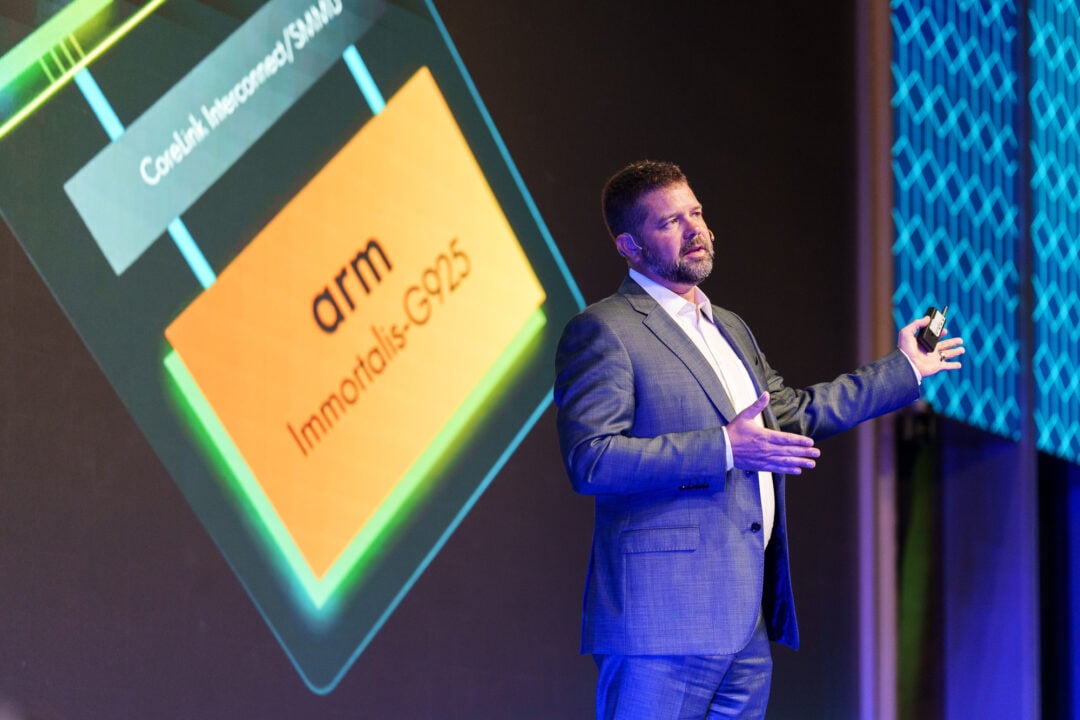
On the opening day of Computex 2024 in Taipei, Arm CEO Rene Haas shared how the company is enabling 100+ billion Arm devices ready for AI from cloud to edge by 2025.
One of the key questions Haas addressed was if the world has enough energy to power the increasing compute needs of AI. While we have seen some amazing innovation around AI, the industry is in an interesting dilemma where the better the processors get to handle the performance requirements of AI, the greater the energy demands.
With Arm’s DNA born of devices designed to run off batteries, Haas believes this is why we’re seeing greater adoption of Arm by leading cloud service providers such as AWS, Google, and Microsoft. Arm is the world’s most power-efficient CPU, and the power savings it delivers are already driving incredible AI innovation according to Haas.
Leading power-efficiency is what Arm has been most known for over the company’s 30+ year history and the foundation of what has enabled it to become the world’s most pervasive compute platform. Yet according to Haas, what really makes Arm unique is a software ecosystem unlike any other.
As Haas pointed out, Arm has become the de-facto choice for every major operating system in the world. The AI PCs recently announced by Microsoft are a great example of this, where the most-used apps are now running natively on Windows on Arm. In fact, with an ecosystem of 18 million software developers, more developers design on Arm CPUs than any other processor today.
This developer support is incredibly important if we want to experience the societal changes AI can unleash from the tiniest devices at the edge to training and inference in the cloud. Developers need to be able to take the innovation they are doing with AI and have it run on the hardware in a performant, power-optimized, highly executable and predictable state.
To ensure this happens on the Arm compute platform, Haas introduced Arm Kleidi AI, a new suite of AI compute libraries that make it easier for developers to run their AI applications on Arm. Haas said, “If there’s anything we’ve learned over Arm’s 30-plus years, as great as the hardware is, if you don’t have something that developers can get access to, the hardware is not going to do you much good.” For example, as developers work on their models in frameworks such as TensorFlow, PyTorch, Llama 3 and MediaPipe, Kleidi AI enables them to go into the abstraction layer and take advantage of the underlying hardware features for AI workloads to achieve their full performance potential.
To speak to the advantages of KleidiAI from an ecosystem perspective, Haas shared videos of executives from Samsung Mobile, Meta and Google on how Arm and KleidiAI will enable them to accelerate AI innovation on Arm across multiple markets.
In addition to all the great work Arm is doing to enable the AI developer ecosystem, it needs to continue to deliver higher-performing and more power-efficient products. To share more on this, Chris Bergey, SVP and GM for Arm’s Client Line of Business, took the stage to talk about the recently announced Arm Compute Subsystems (CSS) for client devices.
This is the first time that Arm has introduced physical implementations of its CPUs and GPUs in leading edge 3 nanometer nodes. According to Bergey, this is important because the Arm ecosystem can now take proven cores, physical implementations in these leading 3 nanometer nodes and get to market faster with greater confidence.
CSS enables chipmakers to focus on their differentiation around the platform and what Armv9 architecture can bring to their next-generation products. When you combine this with KIeidiAI, developers have the tools required to take full advantage of these next-generation hardware technologies.
Haas closed by further reinforcing Arm’s commitment to AI by delivering the most complete compute platforms on the planet. With innovations like Arm CSS and KleidiAI, he expects that more than 100 billion Arm devices will be ready for AI by the end of 2025. It’s an incredible number of devices that Haas said will not only reshape the industry but also the entire planet.
